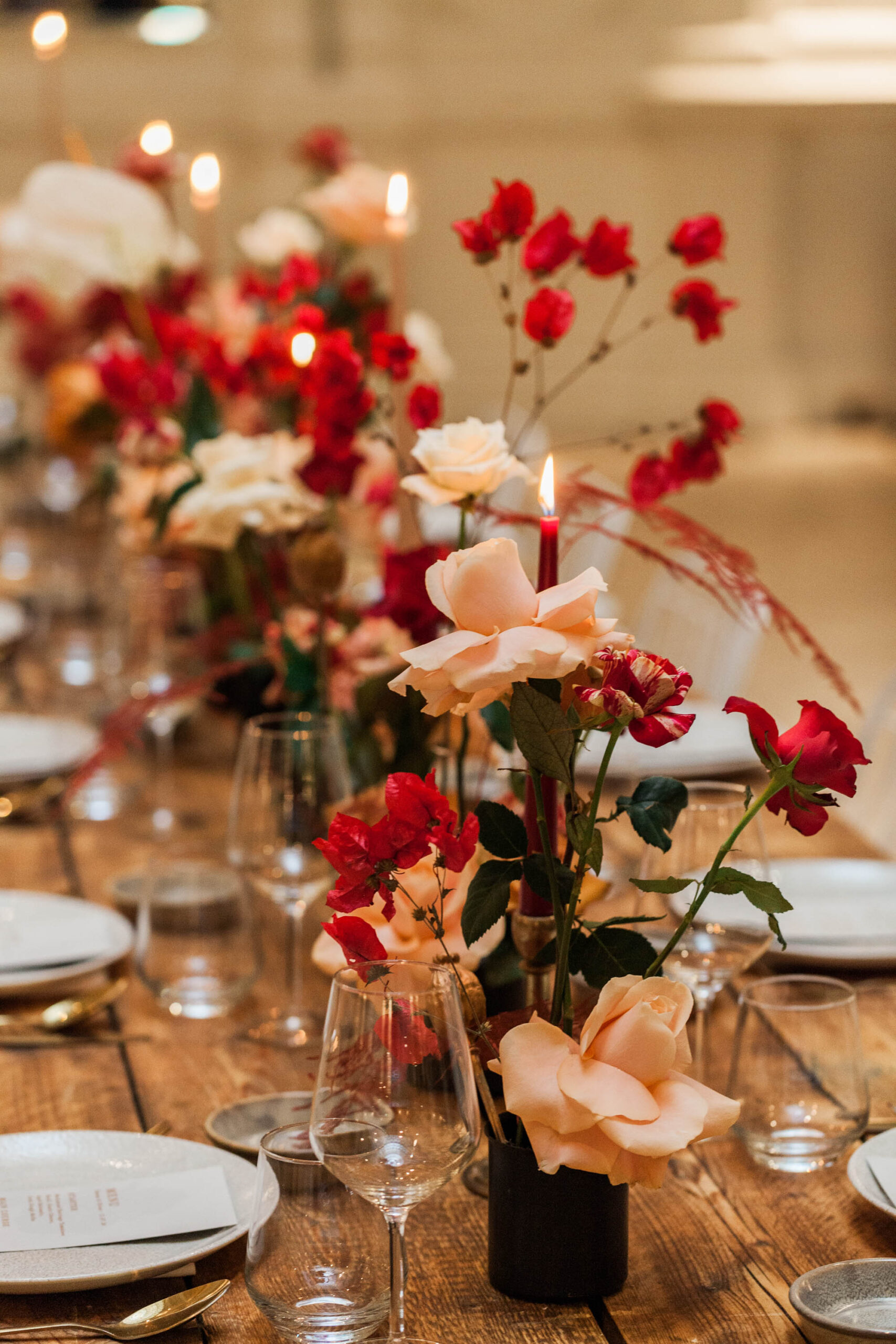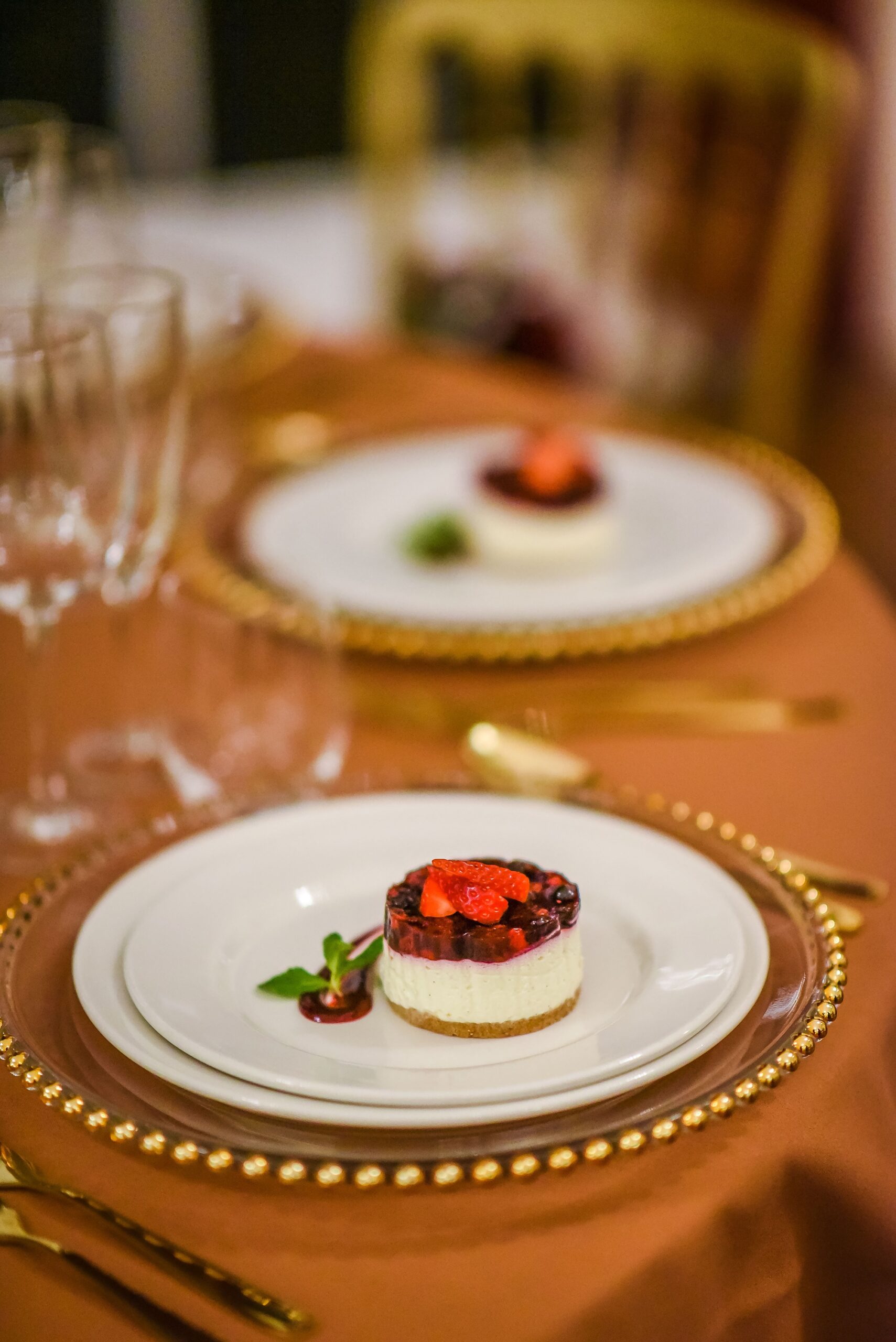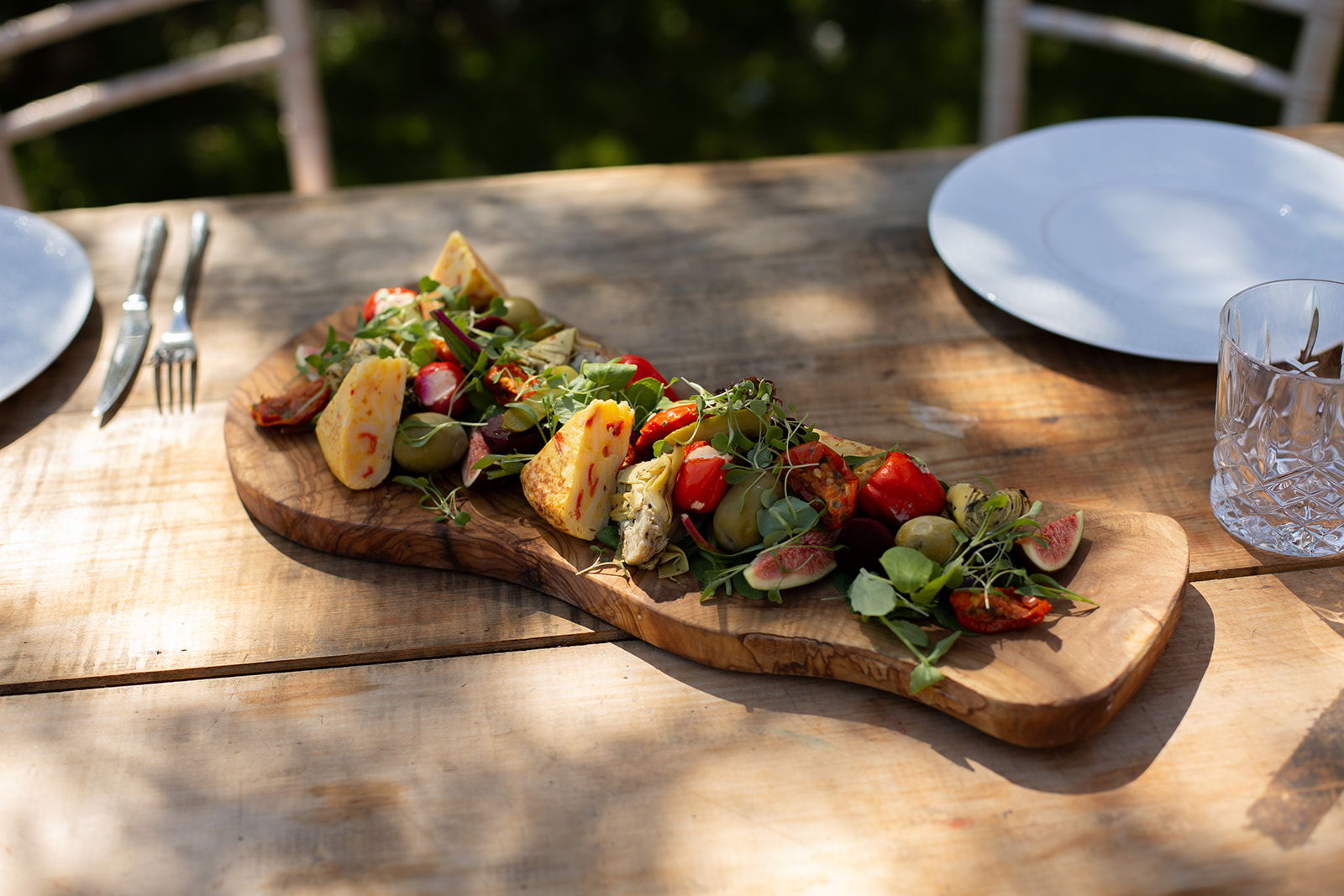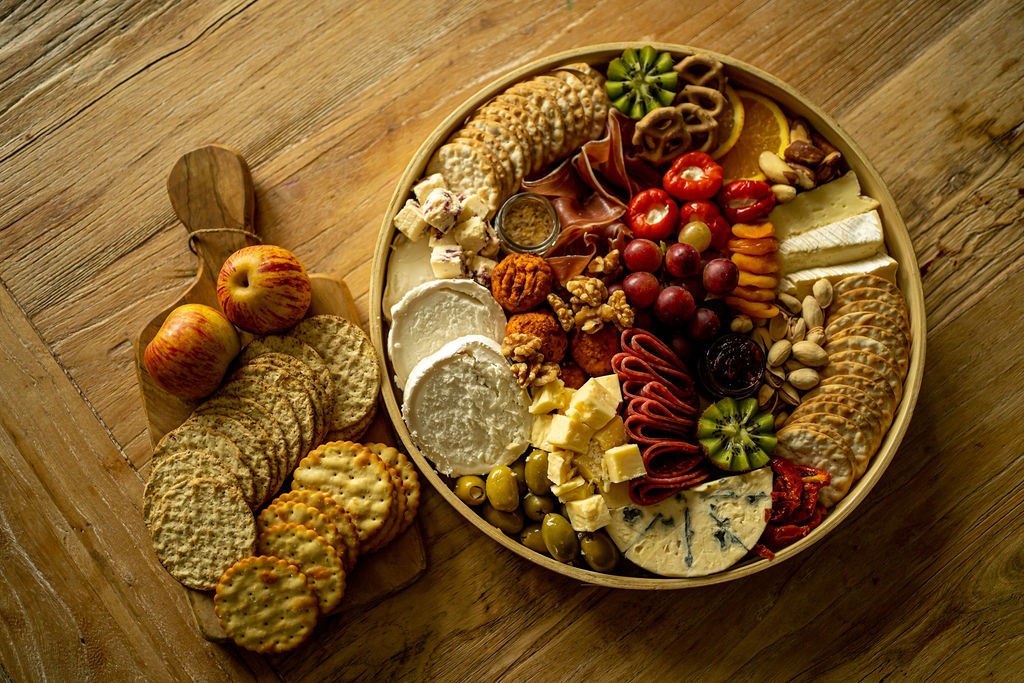Ultimate Guide to Planning your Wedding Reception Menu

A guest article by our friends at Truly Experiences
So, you’ve started actively planning your wedding and it turns out there’s a bit more to it than just finding a dress (or suit) and a venue. Your caterer (or your mum) may have asked you what you want on the reception menu and now it occurs to you that you’ve never given much thought to meal planning.
Cue wedding-preparation panic? Don’t fret; we’ve got you covered with the ultimate guide to planning your wedding reception menu.
Using these tips, you’ll soon put together a delicious menu of wedding-worthy cuisine to make your big day even more memorable.

Credit: Amanda Karen Photography. More ideas like this here: Winter colour in London

Credit: Styled by Wonderful Events, captured by Dita Bowen Photography. More ideas like this here: French inspired Sperry Tent wedding style
Find the Flavour of the Season
Sometimes, what tastes good has a lot to do with the weather.
Who feels like soup at the height of summer or ice cream in the dead of winter?
So you should definitely bear the time of year in mind when planning your wedding reception menu. Also remember that, if you’re having a destination wedding, it might be a different season at your venue than at home.
A menu based on the season in which your wedding will take place will undoubtedly taste the best. It is also a great basis on which to narrow down your countless options and helps keep food expenses down. Here are some ideas for foods that work well with each of the seasons:
Spring
- Fresh, in-season fruit and vegetables;
- Light, cold beverages like wine, cocktails and fruit juice, rather than liqueurs and coffee;
- Salmon and prawn appetisers;
- Cold salads like Greek or potato salad;
- Charcuterie boards with assorted fresh bread and preserves;
- Jelly and pickled fruits;
- Ice-cream and berry compote;
- Biscuit table;
- Wedding cupcakes or mini cheesecakes, rather than a full wedding cake; and
- Most things from the summer menu.

Credit: Fleur Challis Photography. More ideas like this here: An Indian summer – styled inspiration
Summer
- Anything from the spring menu;
- Gourmet sandwiches;
- Crushed ice drinks like frozen smoothies, cocktails and cocktails;
- Ice-cream, ice-cream sandwiches and sorbet;
- Light tapas and
- Street food

Credit: Abraham Photography, Yorkshire. Discover more here: Abraham Photography on English Wedding
Autumn
- Lightly cooked seasonal vegetables;
- Risotto, couscous or polenta;
- Apple pie or fruit cobbler;
- Calamari rounds or prawns in lemon butter sauce;
- Carrot cake;
- Baby potatoes;
- Carvery meats; and
- Most things from the winter menu.
Winter
- Anything from the autumn menu;
- Warm quiches;
- Roast root vegetable platters or meats;
- Roast potatoes;
- Stews or tagines;
- Mulled wine, sangria or liqueurs; and
- Rich chocolate cake.
You should also consider the time of day at which your reception will take place – lighter fare is more appropriate early in the day, while heartier dishes are preferable for evening meals.
Bear the Budget in Mind
Catering is generally one of the biggest wedding reception expenses so, if you’re trying to save money, you can achieve a lot by adjusting your menu accordingly. Fortunately, this doesn’t mean you have to skimp on flavour. While a Michelin Star dining experience is unlike any other, simple food can be just as delicious!
As a rule, the heavier the dish, the higher the price. So, simple yet scrumptious salads are good alternatives to gourmet roast vegetables. Meat and vegetables are generally pricier than starches so you can bulk up on fresh bread or rice to make your meals go further. If you’re planning to have a wedding cake, you could skip the desserts and serve cake for pudding instead. Similarly, you can serve only pre-wedding snacks or appetisers, instead of both.
Also, you may want to think twice about that open bar. A bottle or two of wine or grape juice for each table will do just fine without breaking the bank. Try to arrange to return unopened bottles to the supplier so you don’t pay for what hasn’t been consumed.
You might even be able to do some or all of the catering yourself, with the help of family and friends!
Consider the Caterer

Credit: Nicola Gough Photography at foodie wedding venue Stockton House. More ideas like this here: Country House Elegance
Keep your catering needs in mind when selecting a wedding venue. Some venues may specialise in in-house catering, while others may require you to arrange your own food, and still, others may allow you to choose either option or a combination of both. If budget is important, be sure to do the maths carefully when comparing self-catering (or hiring a professional catering service) with what is offered in house.
Self-catering has to be managed cleverly to avoid mounting hidden expenses that could even end up costing you more than the venue would have charged.
If your venue is handling the catering, this will take a lot of the guesswork out of choosing a menu. The kitchen will likely offer a number of set menus with various combination options and price points for you to choose from. Buffets are a great way to offer variety without spending a fortune.
If you or a loved one will be doing the catering, don’t try to venture too far outside of your comfort zone. A simple and familiar favourite is far preferable to some culinary masterpiece like a soufflé for amateur chefs.
Incorporate Dietary Requirements
Be sure to have your guests notify you of any special dietary needs they may have when they RSVP to your invitations. A good way to ensure this is to create an online RSVP form that asks all the relevant questions.
Some of your guests might be allergic to peanuts or seafood or they may be lactose intolerant. You’re also bound to have a few vegetarians or vegans at your event these days. Don’t forget about the kids either! If you are going to allow children at your wedding, you should offer them special kiddies’ meals (pasta or pizza, or cute sandwiches and nibbles) and keep the portions small to eliminate wastage.
Also, be sure to include some non-alcoholic beverage options for the kids or anyone else who prefers “clean” drinks.
Plan Around Your Wedding Style

Credit: Sophie TC Photography. More ideas like this here: Painswick House wedding inspiration (Gloucestershire)
Obviously, you want your food to fit in with your theme at your wedding, particularly if that theme involves particular activities or seating arrangements. Sit-down dinners, for example, are not ideal for boho-style weddings, where everyone is sitting on cushions on the carpet.
If you expect there to be a lot of dancing, maybe don’t make the meal too rich. If your wedding is themed around a particular place (say, Morocco) in the world, then including local dishes from the region would be a nice touch.



0 Comments